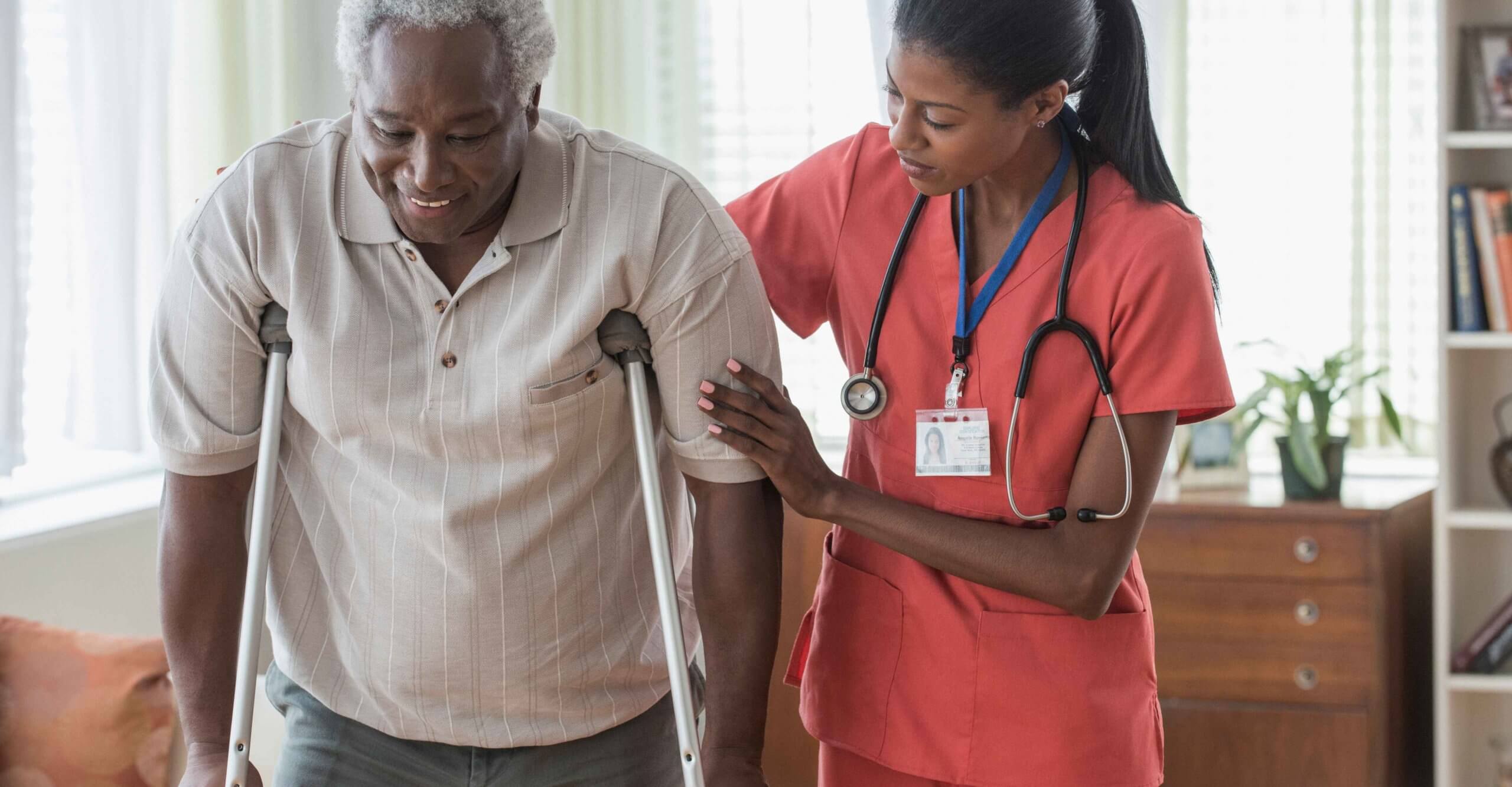Have you ever been confused about the difference between non-weightbearing and offloading?
These wound care terms are often used when referring to the treatment of diabetic and neuropathic ulcers and pressure injuries.
Both can be critical in the successful healing of either type of wound. However, they are not the same thing.
Let’s begin with defining the terms.
What is non-weightbearing?
Non-weightbearing refers to the complete elimination of any weight or force placed on the tissue. The tissue is placed in a position in which it has no contact with any surface that could apply any amount of force or stress it.
Offloading refers to minimizing or removing any weight or force that could be applied to the tissue. Technically, non-weightbearing is a form of offloading, but not all offloading is considered non-weightbearing.
Offloading — in the case of minimizing weight or force — involves the use of devices that redistribute the weight or force onto other areas of the body rather than on the wound.
How do we incorporate these practices into diabetic and neuropathic ulcer and pressure injury management?
Diabetic and neuropathic ulcer management
In the case of a diabetic and neuropathic ulcer located on the plantar aspect of the foot, offloading can take the form of many different devices. Non-weightbearing can only be accomplished via the use of assistive devices such as crutches, walkers, or a knee scooter.
When using crutches and walkers, the patient would bear the weight on his upper extremities and the contralateral lower extremity, while keeping the involved limb completely free of contact with any surface.
This ensures no force or stress is applied to the wound that could potentially damage tissue or inhibit healing.
Offloading options that attempt to minimize the weight or force applied to the tissue include devices such as:
- Total contact casting
- Orthotic shoes
- Shoe cutouts
- Healing sandals
Devices such as these are designed to reduce the weight or force directly on the wound while the patient is still weightbearing on the limb. The devices’ ability to reduce the amount of force varies depending on the design.
These types of devices are advantageous because they disrupt normal ambulation less than assistive devices and knee scooters. The disadvantage is some force and stress may still apply to the wound.
Pressure injury management
The concepts are the same with pressure injuries, but the methods and devices differ.
Non-weightbearing is accomplished via turning and repositioning, whereas offloading to minimize weight and force on the tissue is accomplished via different types of support surfaces.
Both methods are incorporated into the management of pressure injuries.
When a patient is positioned on her side, for example, the opposite greater trochanter and sacrum are in a non-weightbearing position.
If the patient is on a pressure distribution support surface, the greater trochanter in contact with the support surface would be offloaded because of the redistribution capabilities of the surface.
The purpose of a pressure redistribution surface is to more evenly spread the weight of the body over a greater surface area. It helps by decreasing the interface pressure at the skin-support surface contact point.
It cannot eliminate the pressure because the bony prominence is in a weightbearing position.
This compares to a total contact cast, which cannot eliminate pressure on a diabetic foot ulcer when the patient bears weight on that limb. Instead, it can only reduce the total load.
Takeaways for your practice
It’s important to understand the differences in these terms and how to successfully implement them while caring for patients with diabetic and neuropathic ulcers and pressure injuries.
Knowing the differences will help you improve outcomes and facilitate more effective preventative measures.
Until next time … heal on!
Take our Online Diabetic Skin and Wound Management Course.
What do you think?

